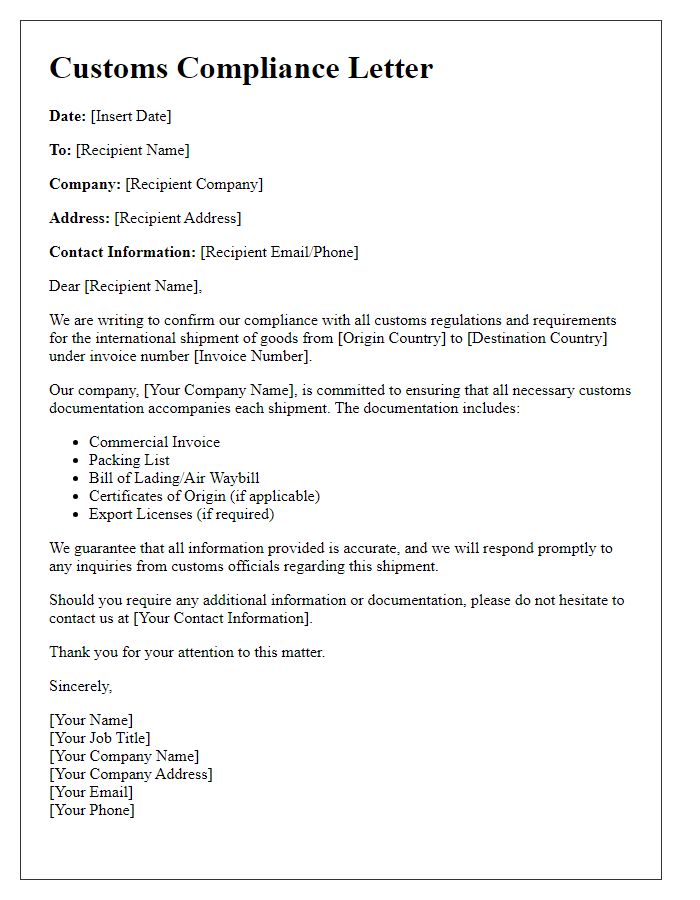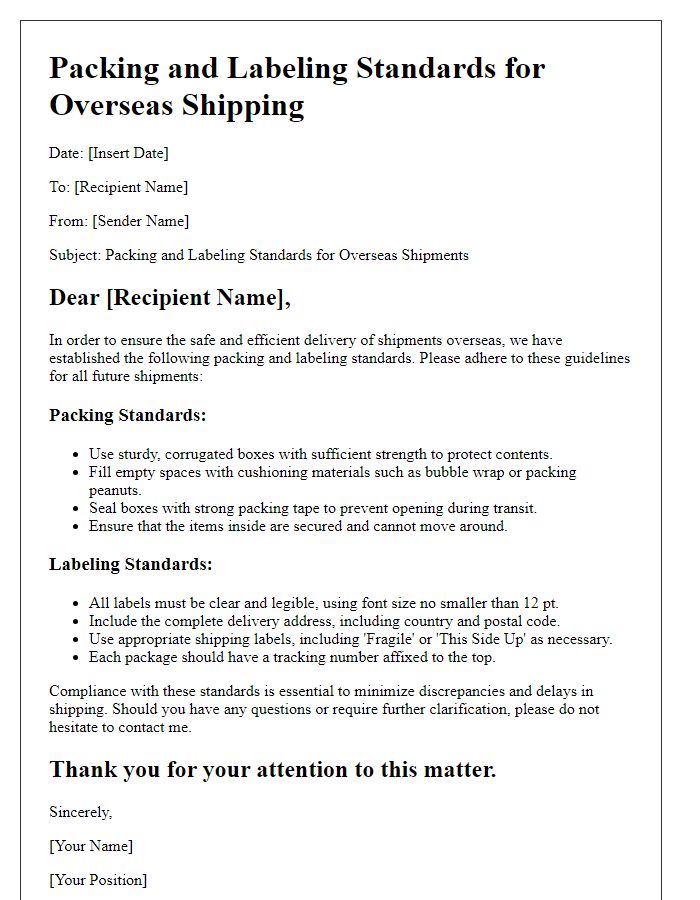Are you looking to simplify your international shipping process? Understanding the essential guidelines can make a world of difference in ensuring your packages reach their destination smoothly and efficiently. From customs regulations to proper packaging techniques, knowing the ins and outs can save you time and money. Curious about the specifics? Read on for a comprehensive overview!

Recipient's Contact Information
Recipient's contact information must include accurate details to ensure successful delivery. Essential elements consist of the recipient's full name, street address including apartment or suite number, city name, state or region (if applicable), postal code, and country name. Phone number (including international dialing code) is vital for communication regarding delivery issues. Email address may also be beneficial for tracking updates. Proper formatting according to local postal standards can reduce delays. Providing clear landmarks or specific instructions can enhance the delivery process, especially in remote areas.
Detailed Shipping Content Description
Detailed shipping content description is crucial for international shipping compliance and efficiency. Accurate descriptions include specifics such as product type, materials used, country of origin, and individual item value typically expressed in currency (USD, EUR, etc.). Restrictions may apply to certain goods, such as electronics (batteries limit), food items (import regulations), and pharmaceuticals (customs checks). Providing proper Harmonized System (HS) codes aids in classifying goods for tariff and tax purposes. Some countries require import permits or certifications for specific products; hence research into destination regulations can prevent shipping delays at border customs. Packaging details should specify dimensions, weight (in kilograms or pounds), and any special handling instructions deemed necessary to ensure safe transit, especially for fragile or perishable items.
Customs and Regulatory Compliance
International shipping involves navigating complex customs and regulatory compliance, essential for smooth transportation of goods across global borders. Each country has specific regulations, requiring knowledge of import and export tariffs, which can vary significantly. Accurate documentation like commercial invoices, packing lists, and certificates of origin must accompany shipments to avoid delays. Additionally, restricted items must be identified, as many nations enforce strict prohibitions against certain goods, such as firearms or endangered species products. Timing also plays a critical role, as customs clearance can take several days, impacting delivery schedules. Understanding the Harmonized System (HS) codes for categorizing products is vital for determining applicable duties and taxes. Compliance with international regulations ensures that shipments arrive safely and efficiently at their destinations, maintaining good relationships with customers and partners.
Shipping Method and Carrier Details
International shipping involves various methods and carriers, each tailored to meet specific needs and destinations. Air freight, a common shipping method, ensures swift delivery across global routes, often reaching major cities like New York or London within 48 hours. Crucial carriers like DHL, FedEx, and UPS offer comprehensive tracking systems, allowing customers to monitor their shipments in real-time. Additionally, choosing the right shipping method can significantly impact costs; ocean freight, although slower, is ideal for bulk shipments and can reduce expenses for larger items. Understanding customs regulations in destination countries, such as duties and taxes, is essential for a seamless shipping experience. Moreover, packaging guidelines must be followed to prevent damage during transit, utilizing materials that comply with international standards.
Terms and Conditions of Shipping
International shipping guidelines outline essential terms and conditions for successfully transporting goods across borders. Package dimensions (such as length, width, height) and weight limitations (usually expressed in kilograms or pounds) are critical for accurate shipping costs. Countries often have import regulations that can include prohibited items such as perishable goods or hazardous materials. Customs documentation (like commercial invoices and export declarations) is necessary to facilitate smooth customs clearance at the destination. Shipping insurance protects against loss or damage during transit, while tracking services allow for real-time monitoring of the shipment status from departure to arrival. Additionally, estimated delivery times can vary significantly based on the destination and chosen shipping method, typically ranging from a few days to several weeks. Understanding these guidelines is vital for effective international shipping compliance and ensuring timely delivery of goods.













Comments